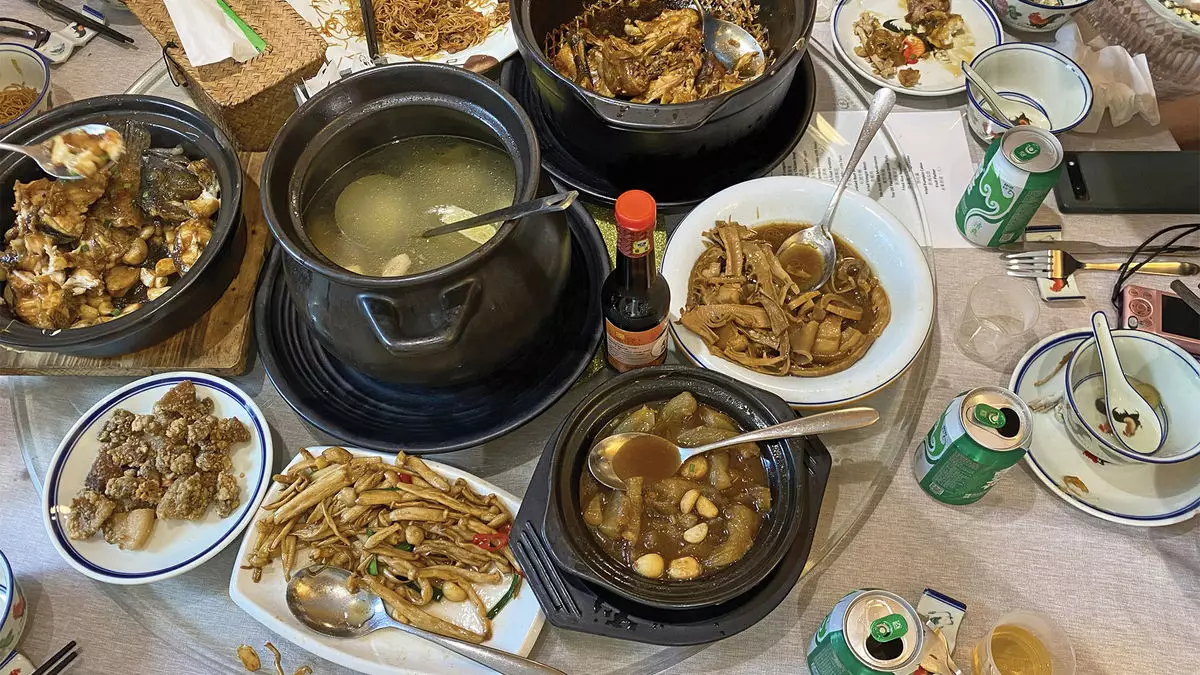Over the last two decades, the consumption of green tea has become a cherished morning ritual for countless individuals around the globe, including myself. However, it wasn’t until a recent voyage that I began to appreciate the intricate process and cultural heritage that transforms tea leaves into the soothing beverage we enjoy daily. Aboard the Viking Yi Dun, embarking on its inaugural coastal voyage through China, I found myself immersed in the rich tapestry of tea culture in a land celebrated for its tea-making traditions dating back thousands of years.
Unveiling the History of Tea
Tea is not merely a drink; it is a symbol of hospitality, culture, and countless rituals embedded in the lives of millions. My journey took me to Xiamen, the birthplace of the renowned Tieguanyin tea, a celebrated variety of oolong tea. The experience was set against the backdrop of a captivating cruise that spanned ten days, allowing travelers to step away from their daily grind and delve into China’s cultural treasures. This particular voyage was brand new for Viking, having only recently expanded its sailings in the region for English-speaking travelers fascinated by the allure of the East.
Onboard the ship, the air was thick with anticipation as we engaged in a traditional Chinese tea ceremony, orchestrated by a talented tea master whose graceful movements seemed almost choreographed. As she performed each step with meticulous precision—warming the tiny cups, brewing the leaves, and elegantly pouring the tea—I realized that the process of making tea was akin to an art form. This newfound perspective ignited a deep curiosity about the origins of the beverage that had been a staple of my mornings for so many years.
Cultural Exploration in Fujian Province
Our bus journey into the mountains of Fujian province was mesmerizing, with rolling hills that seemed to stretch endlessly, carpeted with neatly rowed tea plants reminiscent of Italian vineyards. The landscape was a living testament to the dedication and labor involved in tea cultivation. As we traveled further into An’xi County, our guide—a knowledgeable representative of the local culture—enlightened us about the significance of Tieguanyin tea. It occupies a unique position within the tea hierarchy, offering a flavor profile that ranges between green and black tea, depending on the oxidation process the leaves undergo.
Upon arrival, the aroma of tea-infused dishes beckoned us to a family-style lunch that introduced us to local flavors. The meal was an explosion of taste: fish baked with tea essences, tender braised brisket, and aromatic fried pumpkin cakes were just a few highlights that made the culinary experience memorable. This fusion of local cuisine and tea culture deepened my appreciation for how intertwined these aspects of life are in this region.
After lunch, we donned bamboo hats and collected tea baskets, ready for the hands-on experience of tea leaf harvesting. As we descended the path lined with tea trees, I was enchanted by the soothing greenery that surrounded us. On our arrival at the field, our knowledgeable host guided us through the correct method of picking the tea leaves: selecting two large, mature leaves paired with a smaller, tender leaf in the center. This harvesting technique, I learned, is crucial for maintaining the delicate balance of flavor and quality that defines Tieguanyin.
However, the real connection formed during this part of the journey was not just through the act of picking the leaves; it was the immersion into nature, the scent of the earth, and the rhythmic dance of foraging that spoke volumes about patience and mindfulness—essential elements of both tea-crafting and life itself.
Once we had harvested enough leaves, we sought refuge from an unexpected rain shower beneath a gazebo, where our host shared invaluable insights about what happens to the leaves post-harvest. The meticulous processing steps—drying, frying, curling, and rolling—are as essential as the harvesting itself, shaping the final characteristics of the tea. Witnessing these techniques provided a deeper understanding of the labor and artistry that go into producing tea.
As the excursion drew to a close, we returned to a tearoom to partake in another tea ceremony, this time nestled around a low table with fellow enthusiasts. The atmosphere was imbued with camaraderie as we shared stories while savoring a variety of teas. Purchasing some leaves to take home felt more meaningful after experiencing the journey they undergo and the history entwined in each sip.
Reflecting on this journey, I have come to value tea far beyond its comforting warmth in my morning rituals. The adventure from the lush mountains of Fujian to the delicate cups filled with brewed Tieguanyin has transformed my understanding of tea, enriching my daily experience with a touch of cultural heritage and mindfulness. As I sip my next cup of green tea, I will be reminded not just of its taste, but of the profound journey each leaf undertakes before it reaches my hands.


Napsat komentář